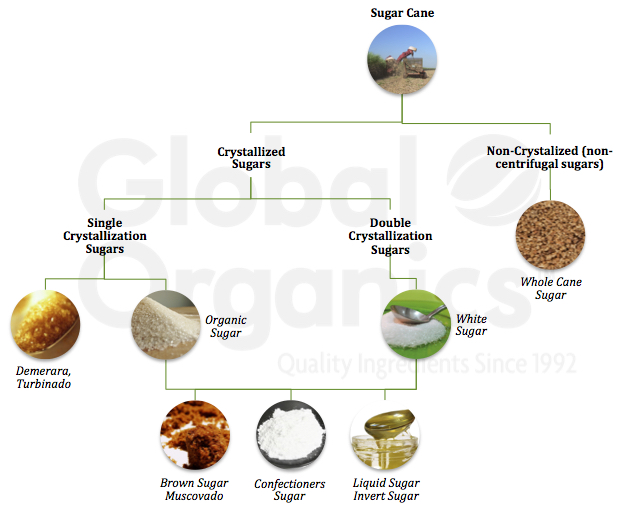The Rich History and Origins of Sugar and Cane Around the World
The Rich History and Origins of Sugar and Cane Around the World
Blog Article
Why Walking Stick Sugar Processing Chemicals Are Crucial for Modern Sugar Refining
The role of cane sugar processing chemicals in modern sugar refining can not be overemphasized, as they are indispensable to enhancing both the efficiency of removal and the total quality of the last product. Representatives such as phosphoric acid and details flocculants are employed to eliminate impurities, resulting in sugar that not just satisfies customer expectations but additionally adheres to market criteria.
Function of Handling Chemicals
The efficacy of cane sugar handling hinges significantly on the strategic application of handling chemicals. These chemicals play a critical duty in boosting the efficiency and quality of sugar extraction and refining. From the first stages of juice extraction to the last filtration actions, handling chemicals facilitate various crucial operations.
In the extraction stage, chemicals such as phosphoric acid and calcium hydroxide are employed to maximize the explanation procedure, aiding to get rid of impurities and suspended solids from the walking cane juice. This not just boosts the return but additionally ensures the clarity of the end product. Additionally, agents like flocculants help in the quick settling of impurities, consequently streamlining the total procedure.
Activated carbon and ion exchange materials serve to eliminate shade and odor, guaranteeing that the polished sugar satisfies consumer high quality criteria. Therefore, the meticulous choice and application of these chemicals are vital for achieving ideal outcomes in walking stick sugar handling.
Trick Types of Chemicals
Cane sugar processing relies upon a variety of crucial chemicals that promote each stage of production. These chemicals play necessary duties in clarifying, lightening, and cleansing the sugar removed from walking cane.
One primary classification of chemicals consists of flocculants, such as polyacrylamide, which help in the explanation procedure by advertising the aggregation and settling of impurities. Additionally, calcium hydroxide is commonly used to neutralize level of acidity and help in the elimination of non-sugar components.
Whitening agents, such as turned on carbon and sulfur dioxide, are made use of to decolorize the syrup, causing a clearer end product. These chemicals aid remove color substances that might impact the sugar's look and marketability.
In addition, phosphoric acid acts as a pH regulator throughout the handling stages, making certain optimal conditions for the enzymatic tasks associated with sugar removal and purification.
Various other crucial agents include edta (ethylenediaminetetraacetic acid), which chelates steel ions that can militarize undesirable responses, and salt hydroxide, which aids in pH control throughout the refining procedure. Collectively, these chemicals boost effectiveness and make certain a high-quality walking stick sugar product.
Benefits for Sugar High Quality
Commonly neglected, making use of certain handling chemicals considerably enhances the total high quality of walking cane sugar. These chemicals play an essential duty in refining processes, making sure that the end product satisfies stringent industry standards for pureness and taste.

In addition, processing chemicals help in attaining a constant granulation and structure, which are critical for customer acceptance. By managing the crystallization process, these chemicals make certain that the sugar crystals develop uniformly, causing a much more enticing product that more liquifies well in various applications.
Furthermore, the use of these chemicals can boost the service life of walking stick sugar by reducing wetness absorption and microbial growth. On the whole, the strategic application of handling chemicals is necessary for supplying high-quality cane sugar that fulfills customer assumptions and market demands.
Ecological Effect Considerations

Additionally, the energy-intensive nature of sugar refining, intensified by chemical use, usually results in increased carbon discharges. This adds to environment change and elevates concerns concerning the sustainability of existing refining techniques. Furthermore, the sourcing of these chemicals might include practices that endanger biodiversity, such as monoculture farming, which reduces the resilience of farming communities.

To minimize these influences, sugar refiners are significantly checking out sustainable alternatives and embracing best techniques that reduce chemical usage. Carrying out extensive ecological management systems can aid make sure that the refining process lines up with environmental requirements and advertises biodiversity. Eventually, a balanced approach that prioritizes both sugar high quality and ecological stewardship is vital for the long-lasting feasibility of the sugar sector.
Future Fads in Refining
As the sugar sector grapples with the ecological obstacles connected with conventional refining methods, ingenious approaches are arising to improve both effectiveness and sustainability. One considerable fad is the adoption of go eco-friendly chemistry principles, which focus on using safe, biodegradable handling chemicals. This shift not only lessens environmental impact but additionally addresses consumer demand for cleaner production approaches.
One more promising advancement is the application of advanced filtering technologies, such as membrane layer separation and adsorption procedures. These techniques boost the quality and quality of the sugar while decreasing the volume of wastewater generated during refining. Furthermore, the combination of digital modern technologies, consisting of IoT and AI, is transforming functional efficiency by making it possible for real-time surveillance and anticipating maintenance, therefore minimizing resource waste.
Moreover, making use of spin-offs from sugar refining, such as bagasse and molasses, is gaining traction. These materials can be converted into biofuels or value-added products, adding to a round economy within the industry. Collectively, these patterns signify a shift towards more sustainable techniques that not only improve operational effectiveness however also align with global sustainability objectives, guaranteeing the future feasibility of sugar refining.
Verdict
Walking stick sugar processing chemicals are important in contemporary sugar refining, considerably improving the performance and quality of sugar extraction. The calculated usage of these chemicals not just boosts the pureness and taste of the end product but click to read also makes sure regular condensation and texture. As the sector increasingly prioritizes sustainability, the adoption of environmentally-friendly processing agents is likely to form future patterns in refining, eventually resulting in better items and expanded life span for customers.

Inevitably, a well balanced method that prioritizes both sugar quality and environmental stewardship is necessary for the lasting feasibility of the sugar industry.
Walking cane sugar handling chemicals are necessary in modern-day sugar refining, significantly improving the effectiveness and quality of sugar removal.
Report this page